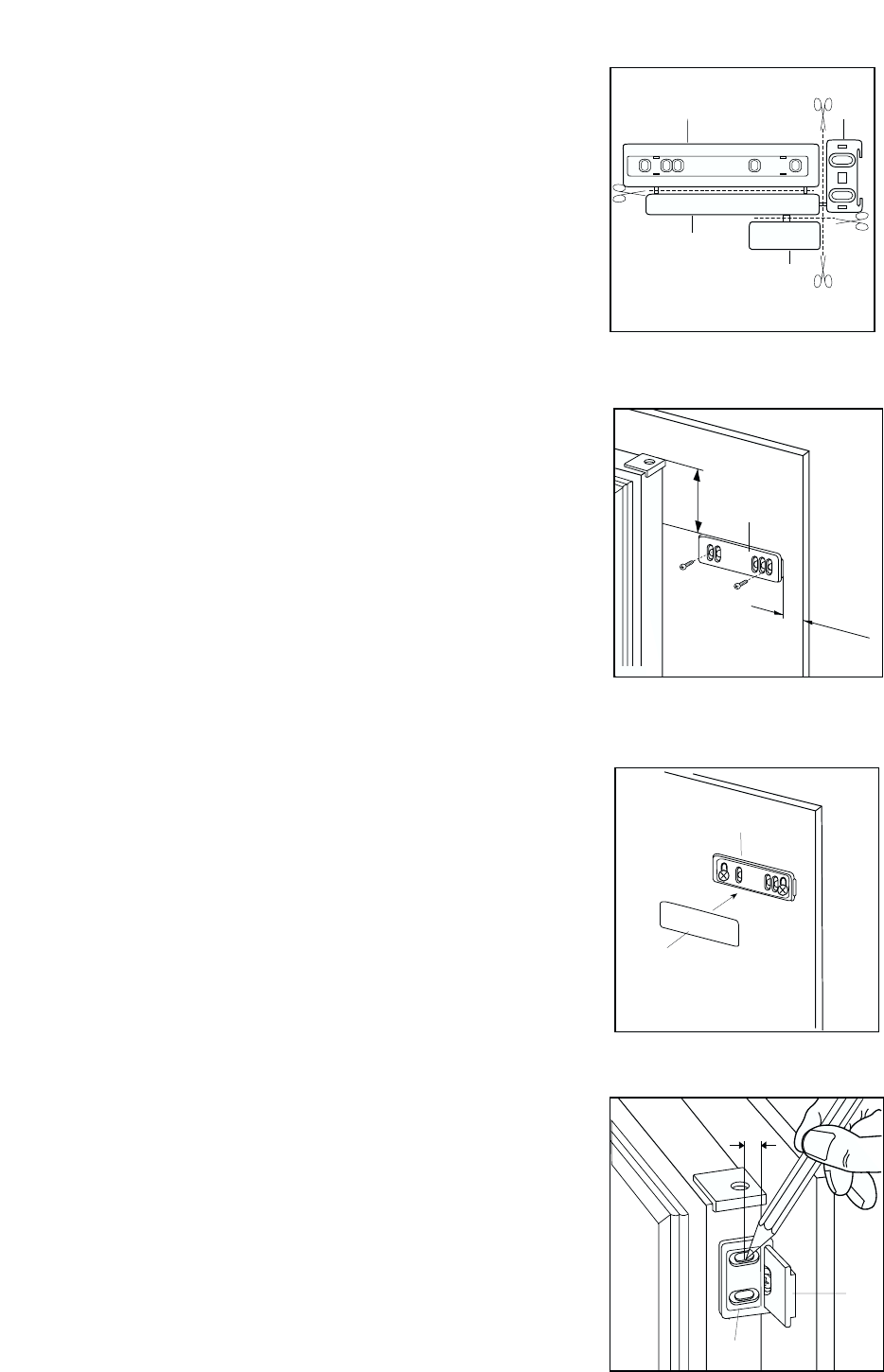
6
Normal Operating Sounds
• You may hear faint gurgling or bubbling sounds
when the refrigerant is pumped through the coils
or tubing at the rear, to the cooling
plate/evaporator or to the fixed freezer shelves.
• When the compressor is on, the refrigerant is
being pumped round, and you will hear a whirring
sound or pulsating noise from the compressor.
• A thermostat controls the compressor, and you
will hear a faint ’click’ when the thermostat cuts in
and out.
Making ice cubes
The appliance is provided with one or more trays for
ice-cubes trays.
Fill the tray(s) 3/4 full to give the ice space to expand
and place them in the freezer compartment.
To release the ice cubes simply give the tray a slight
twist.
Do not use sharp or metallic instruments to remove
the trays from the freezer.
Fresh food refrigeration
To obtain the best performance, do not store warm
food or evaporating liquids in the refrigerator; do
cover or wrap the food, particularly if it has a strong
flavour.
Do not cover the shelves with any protective
material, such as paper, cardboard or plastic, which
may obstruct the air circulation through them.
To help you use your refrigerator correctly, here are
some more useful hints:
Raw meat (beef, pork, lamb & poultry or chicken):
wrap in polythene bags and place on top of the salad
crispers.
Meat can only be stored safely in this way for
one or two days at the most.
Fruit & vegetables: these should be thoroughly
cleaned and placed in the bottom salad crispers.
Butter & cheese: these should be placed in special
airtight containers or wrapped in aluminium foil or
polythene bags to exclude as much air as possible.
Milk bottles: these should have a cap and should be
stored in the bottle rack on the door.
Dual purpose meat box
The meat box can also be used as a salad crisper.
The lid is reversible and when storing meat the 10
mm gap allows the meat to breathe.
By reversing the lid the box becomes airtight and
can be used as a salad crisper.
Thawing
Frozen food, prior to being used, can be thawed in
the fridge or at room temperature depending on the
time available. Small food items may even be
cooked from frozen; in this case cooking will take
longer.
Any frozen food which is allowed to thaw
accidentally should either be eaten as soon as
possible or thrown away. Alternatively, if the food is
uncooked and has not been completely defrosted it
can be cooked and then refrozen.
Meat, fish and fruit should be thawed in the
refrigerator compartment and small pieces of meat
can even be cooked while still frozen, but you must
ensure that it is thoroughly cooked through.
Vegetables should be directly immersed in boiling
water; ready-cooked dishes can be placed directly in
the oven in their aluminium wrapping.
A microwave oven is particularly suitable for thawing
any type of frozen or deep-frozen food: follow the
oven instructions, particularly regarding the
placement of aluminium wrapping or containers in
the oven.
Defrosted cooked food must never be refrozen.
19
Place guide (A) on the inside part of the furniture
door, in the upper and lower position as shown in
the figure and mark the position of external holes.
Having drilled the holes, fix the guide with the
screws supplied.
20 mm
A
50mm
PR166
Separate parts A, B, C, D as shown in the figure
PR266
A
B
C
D
PR33
C
A
Fix cover (C) on guide (A) until it clips into place.
Open the appliance door and the furniture door at
90°. Insert the small square (B) into guide (A). Put
together the appliance door and the furniture door
and mark the holes as indicated in the figure.
Remove the squares and drill holes with ø 2 mm at
8 mm from the outer edge of the door. Place the
small square on the guide again and fix it with the
screws supplied.
8mm
PR167
A
B


















